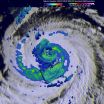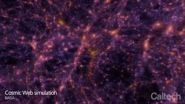(Press-News.org) The elaborate costumes worn by Rapunzel, the heroine of Disney's "Tangled," are testament to the growing sophistication of cloth animation, but for art directors, who must tweak tens or hundreds of technical parameters, achieving a desired look for simulated clothing can be laborious.
To ease this process, Disney Research and Walt Disney Animation Studios have developed a tool that enables technical directors who must create garments that are soft, silky, wrinkly, heavy, or flowing, to use those same terms to control the computer programs that fashion simulated cloth.
The researchers ran a series of experiments in which people were asked to rate the degree to which a garment worn by an animated character matched a particular verbal descriptor. Based on those results, they built a perceptual generative model that enabled users to control a cloth simulation program using these terms. A subsequent series of experiments showed that the model had indeed created garments that people perceived having the desired properties.
"We expect that this methodology will be predominantly used to customize controls of cloth simulators and that it will significantly reduce the amount of time it takes to create a garment that exhibits a desired trait," said Leonid Sigal, a senior research scientist at Disney Research.
The findings from this research will be presented at ACM SIGGRAPH 2015, the International Conference on Computer Graphics and Interactive Techniques, in Los Angeles Aug. 9-13.
Cloth simulators used in creating animated features typically include a number of parameters for controlling the behavior of cloth - parameters such as bend damping, density and shear angle. These parameters loosely represent properties of materials such as wool, silk or chiffon. But parameters interact in complex ways to produce the final behavior of a garment and different combinations of parameters can provide alternate means of achieving the same result. Dialing in the proper combination of parameters to achieve a particular quality sought by a designer or a director is not straightforward.
"Ideally, we would like to have controls for cloth simulators that are intuitive and perceptually meaningful," said Timothy Richards, technical director at Walt Disney Animation Studios.
To map the technical parameters to a set of words commonly used to describe the properties of garments, the researchers began by having professional animators create parameter settings for a set of fabrics: cotton, wool, silk, leather and chiffon. They then created videos, each with slight adjustments of the parameters, that were shown in pairs to adults recruited through Amazon Mechanical Turk. These experiments determined the minimum change in parameters necessary for people to perceive a difference in dynamic behavior of the fabric.
A subsequent series of experiments showed people videos of an animated woman in a skirt walking and spinning; they were then asked to rank them based on the degree to which skirt material reflected a trait such as silkiness, smoothness, or crispness. These rankings were used to learn a model that could map from a degree of the particular trait, or trait combination, to the unintuitive parameters of the simulator. A third set of experiments validated that the incremental changes for each trait resulted in corresponding behavior of the cloth that matched the selected level of that trait.
"While we learned the traits from a single motion - walking with a spin - and one sample garment - a skirt - these learned traits generalize and can be directly applied to other garments and motions," Sigal said.
Mapping commonly used descriptors of garments to sets of parameters is an approach that could be used with any cloth simulator, the researchers said.
INFORMATION:
In addition to Sigal and Richards, the research team included Moshe Mahler, Spencer Diaz, Kyna McIntosh, Elizabeth Carter and Jessica Hodgins of Disney Research.
More information, including a video, is available at http://www.disneyresearch.com/publication/garment-simulation/.
About Disney Research
Disney Research is a network of research laboratories supporting The Walt Disney Company. Its purpose is to pursue scientific and technological innovation to advance the company's broad media and entertainment efforts. Vice Presidents Jessica Hodgins and Markus Gross manage Disney Research facilities in Los Angeles, Pittsburgh, Zürich, and Boston and work closely with the Pixar and ILM research groups in the San Francisco Bay Area. Research topics include computer graphics, animation, video processing, computer vision, robotics, wireless & mobile computing, human-computer interaction, displays, behavioral economics, and machine learning.
Little details, such as the wrinkling or twitching of an eyelid, can have a big impact on whether a digitally rendered face looks real in a film or videogame. Now scientists at Disney Research have devised the first method to capture these subtleties of the eyelids in detail.
Their method, to be presented at ACM SIGGRAPH 2015, the International Conference on Computer Graphics and Interactive Techniques, in Los Angeles Aug. 9-13, captures detailed, dynamic skin features and creates plausible folding and stretching in areas that aren't directly captured during data collection.
Artists ...
Obtaining the aerodynamic properties necessary to simulate falling leaves or a tumbling box caught by the wind can be as simple as dropping the object off of a balcony and recording the fall, thanks to OmniAD, a data-driven technique developed at Disney Research.
You would not want to design an airplane with this method, but the results are good enough for simulating aerodynamic effects of light, 3-D objects in videogames and animations, said Nobuyuki Umetani of Disney Research and Tobias Martin of ETH Zurich. The system can even be used to design kites that actually ...
The same sort of video processing effects that usually require video to be shot in controlled environments where 3-D positions of cameras and objects are precisely known can be achieved with real-world, handheld video shot from consumer-grade cameras using a new approach pioneered by Disney Research.
The technique, developed with Braunschweig University of Technology, compensates for the lack of exact 3-D information about a scene by taking advantage of the fact that most elements of a scene are visible many times in a video. The researchers found they could sample pixels ...
A 3D-printed teddy bear can have a stiff head, a pliable tummy and bendable arms, even though all of it is made of the same relatively stiff material, using a new method developed by Disney Research.
By using the printer to alter the small-scale structure of the material, the Disney researchers showed they could vary its elasticity dramatically within the same object. They developed families of compatible microstructures with varying elastic properties, enabling designers to select the properties desired for each region of an object.
The team demonstrated their new ...
Computer graphics researchers have developed a way to efficiently render images of sand castles, gravel roads, snowmen, salt in a shaker or even ocean spray - any object consisting of randomly oriented, but discernible grains - that look realistic whether viewed from afar or up close.
The new method, developed by Disney Research in collaboration with researchers from Karlsruhe Institute of Technology, ETH Zurich, Cornell University and Dartmouth College, employs three different types of rendering techniques depending on the scale at which the object is viewed.
A sand ...
Chicago, August 5, 2015--A new national survey conducted by The Associated Press-NORC Center for Public Affairs Research reveals a disparity among blacks' and whites' perception of violence against civilians by police. Nearly three-quarters of black respondents consider violence against civilians by police officers to be an extremely or very serious problem, compared to less than 20 percent of whites. However, the poll also finds agreement across racial groups on many of the causes of police violence, as well as further consensus that changes in policies and procedures ...
Disney Research has created LinkEdit, interactive software for predictably changing the shape or motion of planar linkages used in such objects as kinetic sculptures, folding furniture and mechanical toys.
The LinkEdit software enables users to make desired changes in a linkage, such as altering its size or shape, while preserving other features, such as the walking gait of a linkage for a mechanical leg. The researchers demonstrated this capability by making alterations to the Jansen linkage, the building block to the famous walking sculptures created by artist Theo ...
Forehead wrinkles that rapidly deepen and crow's feet that appear suddenly around the eyes might distress the average person, but the ability to quickly and realistically incorporate such details in a facial reconstruction is the key feature of a new performance capture method developed at Disney Research.
The method, which requires only a single video camera such as a webcam, is the first to both operate in real-time and to capture facial features in high resolution, including such details as wrinkles.
"This could open up a variety of new applications, from casual ...
Heavy rain, towering thunderstorms, and a large area are things that NASA satellites observed as Typhoon Soudelor moves toward Taiwan on August 5, 2015.
NASA's Terra satellite passed over Soudelor on August 5, 2015 at 01:45 UTC and the Moderate Resolution Imaging Spectroradiometer (MODIS) instrument captured a visible image of the large storm in the Philippine Sea. The eye appeared to be cloud-filled as bands of thunderstorms spiraled into the center of the storm.
The Global Precipitation Measurement (GPM) mission core observatory, a satellite managed by both NASA and ...
A team of astronomers led by Caltech has discovered a giant swirling disk of gas 10 billion light-years away--a galaxy-in-the-making that is actively being fed cool primordial gas tracing back to the Big Bang. Using the Caltech-designed and -built Cosmic Web Imager (CWI) at Palomar Observatory, the researchers were able to image the protogalaxy and found that it is connected to a filament of the intergalactic medium, the cosmic web made of diffuse gas that crisscrosses between galaxies and extends throughout the universe.
The finding provides the strongest observational ...

